| Saturn has 274 Moons! (2025-3-15) ⬅︎ |
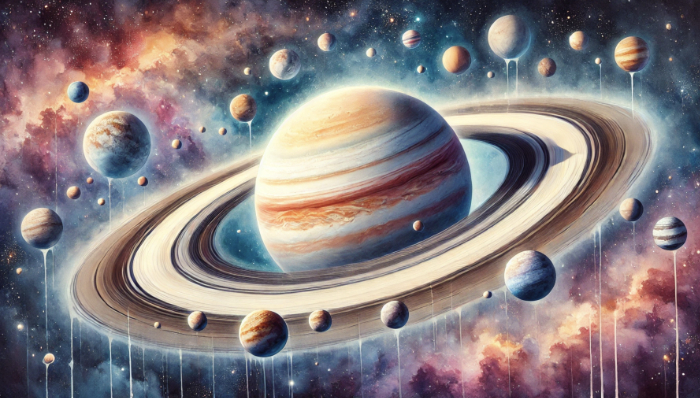 |
Astronomers have recently discovered 128 new moons orbiting Saturn, bringing the ringed planet’s total to an astonishing 274 moons — that’s more than all the other planets combined!
These new moons are very small, many only about 1 kilometer wide, and they’re difficult to spot with traditional methods. To find them, astronomers used an advanced technique called “shift and stack.” This involves combining many images taken over time to reveal faint objects that move slowly against the background of space.
Most of these moons are what astronomers call irregular moons. Unlike the large, well-behaved moons that orbit neatly around Saturn’s equator, these irregular moons have tilted, stretched, or even backward orbits. They often travel in swarms or groups, which suggests they might be fragments of larger moons that shattered in past collisions — a reminder of how active and chaotic our solar system has been.
While these tiny moons are far too dim to be seen with backyard telescopes, their discovery helps scientists better understand the history of Saturn and the dynamics of planetary systems.
Although we can't see these from our backyards, we can spot Saturn’s six largest moons and here’s a list of them from brightest to dimmest:
| Top 6 Moons |
Brightness
Magnitude |
Telescope
Minimum |
Cool Facts |
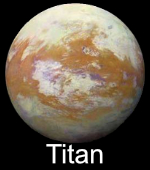 |
+9.0 |
4”
100mm |
Titan is the largest moon of Saturn (5,149 km) and even larger than the planet Mercury. It is the brightest of Saturn's moons and the easiest to see. Very strangely, it has an atmosphere — the only moon in our solar system with one. Like Earth's atmosphere, it is mostly nitrogen, but it also has a lot of methane. Being so cold, Titan’s surface has lakes of liquid methane and ethane. |
 |
+10.1 |
6”
150mm |
Rhea is Saturn’s second largest moon (1,527 km) but it is far smaller than Titan and even smaller than Earth's moon (3,475 km). It is over twice as dim as Titan and harder to see. It is an ice world with a rocky core. |
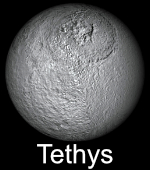 |
+10.7 |
6”
150mm |
Tethys is a small (1,023 km) ice moon that orbits close to Saturn. It has a massive canyon (Ithaca Chasma) that stretches across the moon and a gigantic crater (Odysseus Crater). |
 |
+10.9 |
6”
150mm |
Dione (1,123 km) is an icy world, heavily cratered and cracked. It may have liquid water below its surface. |
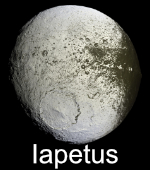 |
+11.5 |
6”
150mm |
Although Iapetus (1470 km) is nearly the same size as Rhea, it is over 3 times dimmer. Part of it is bright but a large part is quite dark, possibly covered in organic compounds, making it hard to see.
|
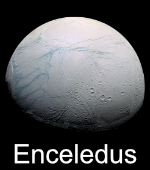 |
+12.3 |
8”
200mm |
Enceladus is a small (504 km) ice moon and difficult to see, being over twenty times dimmer than Titan. It has gotten a lot of attention ever since geysers shooting water into space were photographed by NASA's Cassini spacecraft. With liquid water confirmed, could Enceladus harbor life? |
Do you have a 4" or larger telescope? If so, spotting one or more of these moons can make a great stargazing challenge... good luck! |
| |



